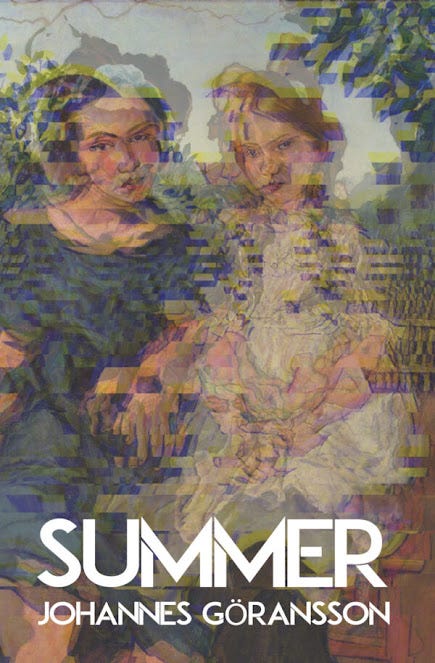Metaphors are supposedly the key feature of poetry, but metaphors can work in a lot of different ways. I loved this review of my book Summer, where Yongyu Chen argues that the book “kills metaphors,” replacing it with the contagion and contact of of metonymy:
When metaphor dies—when it is killed—metonymy, its foil, the term it’s been paired with in the history of semiotics, comes to the forefront of language. Metonymy so aptly characterizes Summer because metonymy is a kind of contagion. If metaphor emphasizes the sameness of disparate elements, metonymy emphasizes, instead, the intense differences between contiguous things, how things that share a material nexus are yet wildly heterogeneous. Metonymy reinvents the proximity of touching things; everything is touching, is inter-acting, yet without reduction to singular, featureless slush
To go back the framework I set up in my essay on “mimicry,” there’s the same sense of the bodily as a site of corruption, “contagion.” Mimicry as a noisy transfer, a contact. This reminds me of the “mimetic magic” Frazier discusses in his classic book The Golden Bough, where touching/contact is an essential part of the magic - and mimicry. The mimicry happens through touching the original, not through an abstract “correspondence” (and here I’m going back to Benjamin’s “On the Mimetic Faculty”). Thus the magic of say using a lock of someone hair’ etc.
*
There’s an interesting new review of the Swedish translation of Antonio Gamoneda’s The Book of the Cold (there’s an English version, translated by Hedeen/Nunez out from the World Poetry Series) by Björn Kohlström, a prominent Swedish poetry critic. He makes an interesting comparison between Gamoneda and Tranströmer:
Metaphors must have the capacity of being both unexpected and completely obvious at the same time… It is said that Tomas Tranströmer achieved mastery in the art of delivering these metaphors that managed to be both original and understandable. Sorry if I'm being snarky here myself, but it has to be said that Gamoneda wants something different from Tranströmer with his metaphors (doesn't the Swedish master of metaphors get a little predictable with his rebuses that always have an answer?).
Gamoneda is wilder, more cryptic, investing more of his private fears and letting his own neuroses spill out. Therefore, his short and aggressive poems become edgy, hurtful, feverish, and not the kind of display that I - unfortunately all fans - think Tranströmer so often ends up in. I can't read him without smelling circus popcorn. Gamoneda moves towards the unfulfilled, towards a despair that does not reach closure…
I love what Kohlström gets at here: there’s no “closure” in Gamoneda, there’s a noisiness in the metaphors, a leakage. It’s as if the metaphors become too bodily - the spill out, become sick. What I am translating here as “unfulfilled” is “oinfriad” - ie promises are kept. The accounts are balanced, as Bataille might say, in Tranströmer, but Gamoneda doesn’t.
I think this is the crux of metaphors: to you complete them, or do you let them leak - and thus make contact?
*
Maybe the comparison to Tranströmer is useless, but it definitely is making me think about the two poets. There’s a lot in common - at times Gamoneda sounds quite a bit like Tranströmer, an inheritor of surrealism - but there’s an intimacy, sense of contact, of entering into a catastrophe that is always at arm’s length in Tranströmer. Perhaps the diction reveals my Romantic worldview, Gamoneda enters into life’s melee:
(from Gamoneda’s Book of the Cold, translated by Hedeen/Nunez:)
A forest spreads open in memory and the scent of resin is suited for the heart. I saw spheres of sweat and insects in the sweetness;
then twilight in its eyes;
later the thistle boiling before the ryegrass and the weariness of birds shadowed by the light.
*
Tranströmer was one of the first poets I loved (and I wrote about him here for Cleveland Review) but I’ve always felt a bit at odds at the contained-ness - the “popcorn eating” admiration in Kohlström’s estimation - or what I might, after Manny Farber, call “the white elephant-ness” of Tranströmer’s “perfect” metaphors, and in my own writing I feel closer to Gamoneda’s infected and infecting writing.





